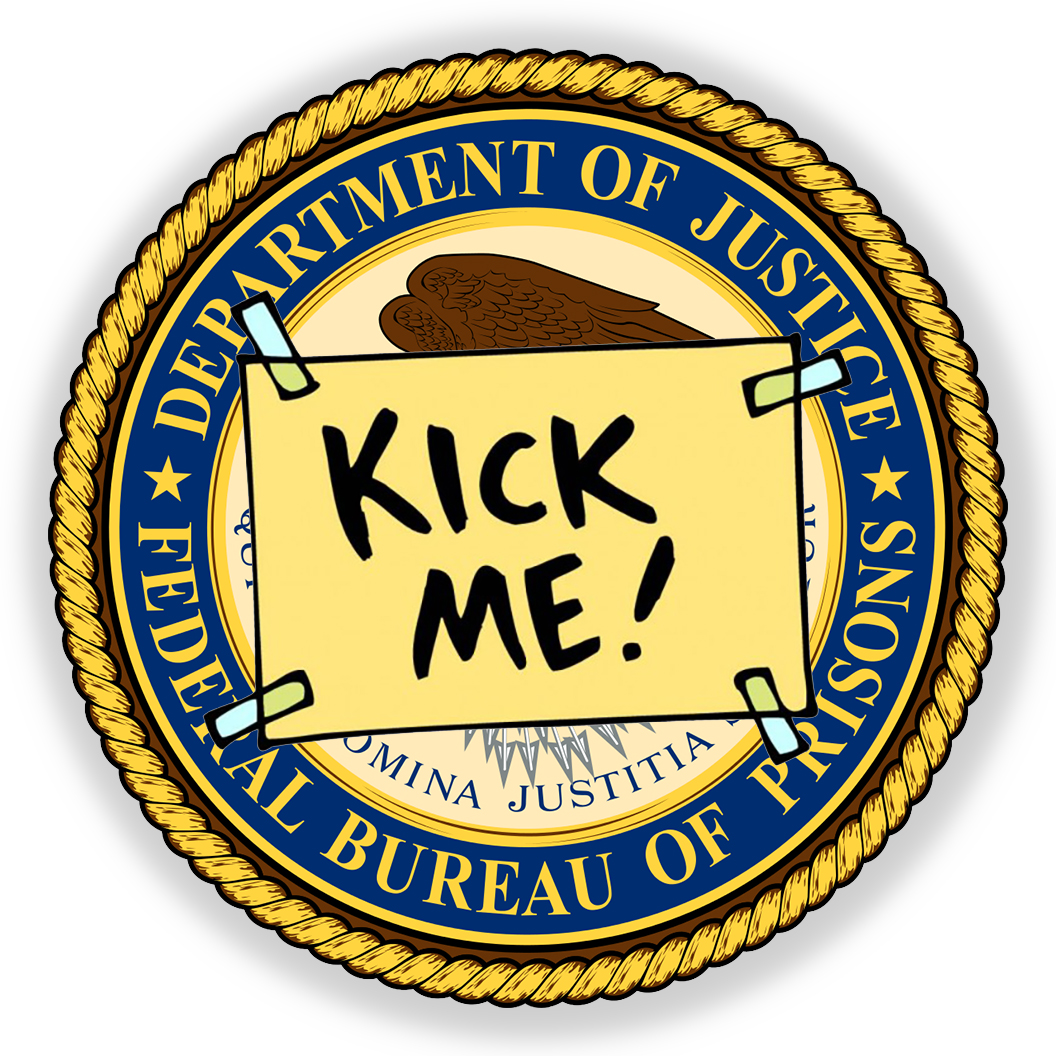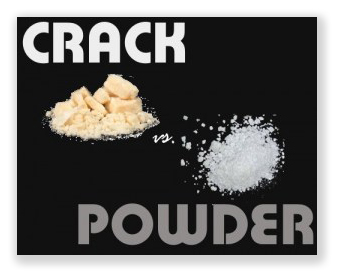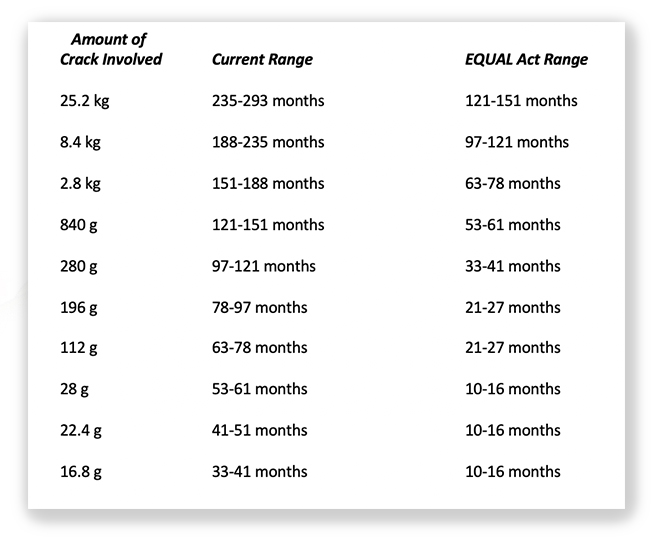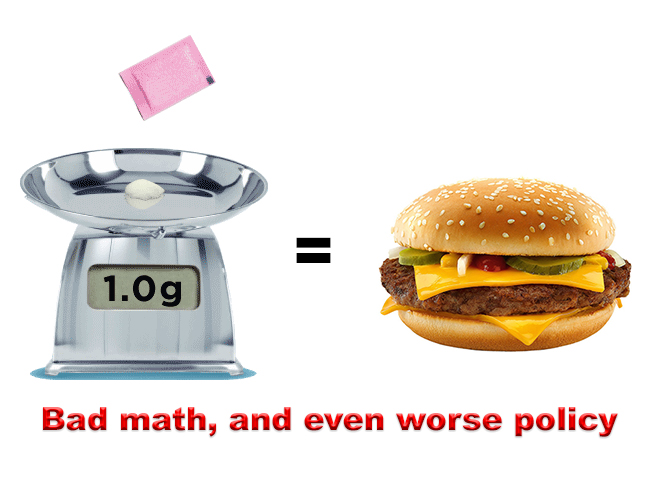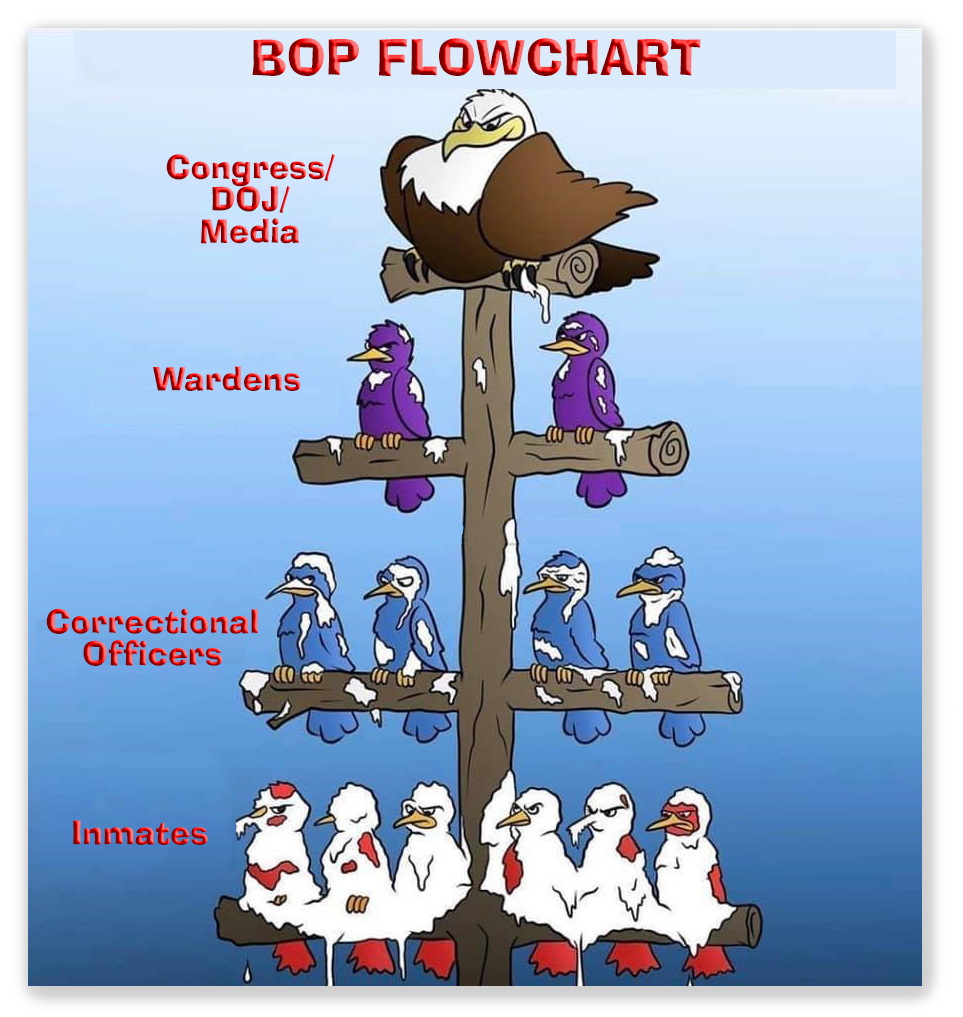We post news and comment on federal criminal justice issues, focused primarily on trial and post-conviction matters, legislative initiatives, and sentencing issues.

YOU KNOW WHAT ROLLS DOWNHILL
 The Washington Post breathlessly reported last month that the BOP Inmate Trust Account held over $100 million belonging to prisoners, and the funds were not being tapped for restitution, fines, child support, and the like.
The Washington Post breathlessly reported last month that the BOP Inmate Trust Account held over $100 million belonging to prisoners, and the funds were not being tapped for restitution, fines, child support, and the like.
Horrors! Over $100 million! Why, divided by the number of federal prisoners (153,996), that is a staggering average of over $650 per inmate. An amazing thing that the prisoners are not simply driving their Bugatti La Voiture Noires to chow instead of walking…
I predicted at the time that nothing good would come from the story. So far, I am being proven right (as rare as that event might be – just ask my wife of 42 years). So, the excrement put in motion by the Post is rolling downhill toward the inmates…
 Last week, Sen. Dianne Feinstein (D-California), Sens Richard Durbin (D-Illinois), Charles Grassley (R-Iowa), and five other senators – all members of the Judiciary Committee – wrote to the BOP demanding that it provide “an immediate briefing… on its management and oversight of the inmate Trust Fund/Deposit Fund program… requesting answers to reports that BOP’s inmate Trust Fund/Deposit Fund program operates with little oversight, enables federal inmates to avoid paying child support and other debts and fails to scrutinize inmate accounts for suspicious and potentially criminal activity.”
Last week, Sen. Dianne Feinstein (D-California), Sens Richard Durbin (D-Illinois), Charles Grassley (R-Iowa), and five other senators – all members of the Judiciary Committee – wrote to the BOP demanding that it provide “an immediate briefing… on its management and oversight of the inmate Trust Fund/Deposit Fund program… requesting answers to reports that BOP’s inmate Trust Fund/Deposit Fund program operates with little oversight, enables federal inmates to avoid paying child support and other debts and fails to scrutinize inmate accounts for suspicious and potentially criminal activity.”
The letter says the “circumstances the Post describes are deeply concerning.”
Most of what the Post reports is deeply concerning, but not for the reasons the senators have in mind.
 The Bureau of Prisons offers inmates the opportunity to participate in the Inmate Financial Responsibility Program, under which the BOP takes a portion of the inmates’ trust funds every quarter (sometimes more frequently) to apply to court-imposed fines, fees, and restitution. The program is voluntary like filing tax returns is voluntary: prisoners can choose not to participate, but they won’t like the consequences. Those adverse effects include restrictions on commissary, refusal to place inmates in preferred UNICOR jobs, and denial of halfway house or home confinement.
The Bureau of Prisons offers inmates the opportunity to participate in the Inmate Financial Responsibility Program, under which the BOP takes a portion of the inmates’ trust funds every quarter (sometimes more frequently) to apply to court-imposed fines, fees, and restitution. The program is voluntary like filing tax returns is voluntary: prisoners can choose not to participate, but they won’t like the consequences. Those adverse effects include restrictions on commissary, refusal to place inmates in preferred UNICOR jobs, and denial of halfway house or home confinement.
However, payments are tailored to inmates’ circumstances. After all, when you’re making $5.00 a month sweeping hallways, even a token IFRP payment of $25.00 quarterly seems like a down payment on the Taj Mahal. Everyone recognizes without talking about it that IFRP payments, like virtually all of the money in inmate accounts, comes from the prisoners’ loved ones (most of whom can ill afford what they send their incarcerated brothers and sisters).
So the plain truth is that IFRP is a tax on the sacrifices of inmates’ families. Somehow, the Washington Post I-team didn’t say much about this.
 Prisoners can probably say farewell to token IFRP payments within the next year, once the BOP scrambles to satisfy the Judiciary Committee’s concerns. That will mean that inmates’ families will be paying what is essentially a tax on gifts to their imprisoned family members. And that commissary sales – the profits from which pay for recreation, library, and other inmate services – will fall. And that there will be fewer calls home and fewer emails (all of which inmates pay for).
Prisoners can probably say farewell to token IFRP payments within the next year, once the BOP scrambles to satisfy the Judiciary Committee’s concerns. That will mean that inmates’ families will be paying what is essentially a tax on gifts to their imprisoned family members. And that commissary sales – the profits from which pay for recreation, library, and other inmate services – will fall. And that there will be fewer calls home and fewer emails (all of which inmates pay for).
To be sure, it is a concern if inmates are abusing the trust fund to launder funds, or if they are sitting on a ton of money and not paying debts they owe. But it’s a fairly easy exercise to identify people whose accounts have unusually high balances. The Post, after all, found out that 20 inmates had balances over $100,000, and even identified the inmate, a former doctor, who had $250,000 plus. And while the newspaper complained that “authorities… typically have to go to federal court to try to force inmates to pay what they owe to crime victims and to settle other debts,” the restitution to victims is part of the criminal judgment, and “going to federal court” is as easy as filing a motion.
 The BOP can and often will freeze inmate accounts upon any request by a federal agency, and maintain the freeze for as long as it wants to do so. A court will not interfere, as was demonstrated in United States v. Sararo, a 2016 district court case in Florida, and will order all but a pittance of the account turned over for restitution upon government motion (United States v. Corbett).
The BOP can and often will freeze inmate accounts upon any request by a federal agency, and maintain the freeze for as long as it wants to do so. A court will not interfere, as was demonstrated in United States v. Sararo, a 2016 district court case in Florida, and will order all but a pittance of the account turned over for restitution upon government motion (United States v. Corbett).
But common sense is usually the first casualty when politicians get involved, especially when their minds are made up upon the strength of a single newspaper article.
Press release, Feinstein, Durbin, Grassley, Judiciary Committee Members Press for Answers on Inmate Trust Accounts (June 29)
Washington Post, Federal prisoners hold $100 million in government-run accounts, shielded from some criminal scrutiny and debt collection (June 9, 2021)
United States v. Sararo, Case No. 2:11-cr-80-FtM-29UAM, 2016 U.S. Dist. LEXIS 150367 (M.D.Fl., Oct. 31, 2016)
United States v. Corbett, Case No. 2:10-cr-00015-1, 2021 U.S. Dist. LEXIS 35502 (S.D.W.Va., Feb. 25, 2021)
– Thomas L. Root


